The B25 Mitchell bomber wreck lies in about 17m of water some 200m off the beach at Wanigela in Collingwood Bay, approximately 32km southwest of Tufi and Cape Nelson.
Unlike the crystal-clear waters surrounding Black Jack, this wreck sits in an area where sediment from a nearby river gives the water a murky, grey-green cast.
While this reduces visibility, it also lends an eerie, mist-like quality to the site. Enhancing its ghostly presence on the seafloor.
Why the crew of seven chose to christen their bomber Pistoff remains a mystery, lost to time.
But given the hardships and dangers they faced during World War II, one can speculate on their sentiments…
On January 8, 1943, Pistoff was one of 12 U.S. aircraft participating in a coordinated attack on enemy shipping near Lae.
However, their mission was soon interrupted by five Japanese Zero fighters, sent to defend the fleet.
What followed was a fierce aerial battle, one that would see Pistoff meet its fate.
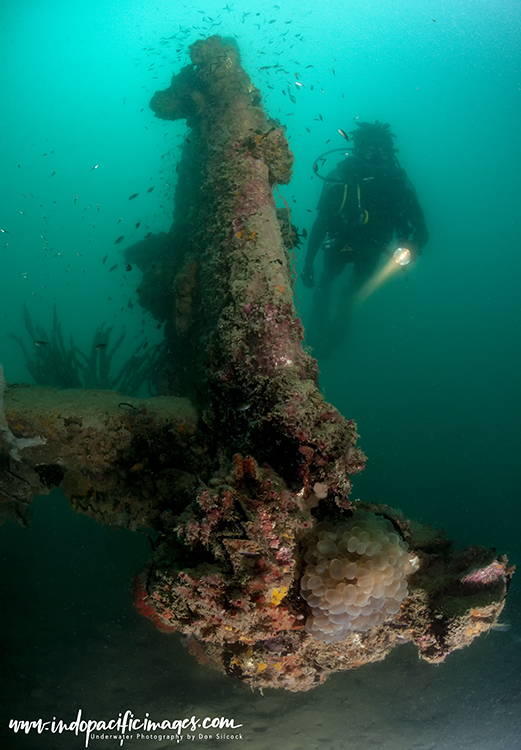
With its right engine badly damaged and leaking fuel, Pistoff was in serious trouble. Her pilot, 1st Lt. William R. Lett, managed to shake off the attacking Zero’s and head south down the coast. But the engine was leaking so badly he was forced to look for a place to land before the aircraft became uncontrollable.
The deep waters and rugged fjords around Cape Nelson were far from ideal. So Lett headed further south, scanning the coastline for a better option. Eventually, settling on Collingwood Bay as the shallower waters there must have seemed like the best chance for a controlled ditching. One that offered the possibility of a safe escape for the crew.
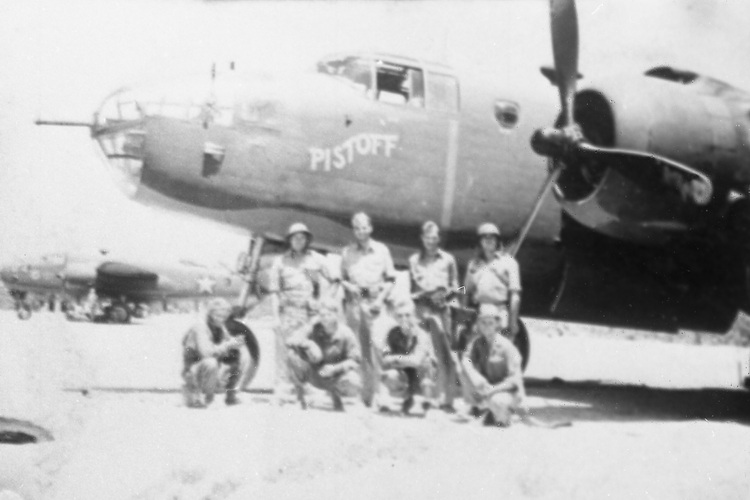
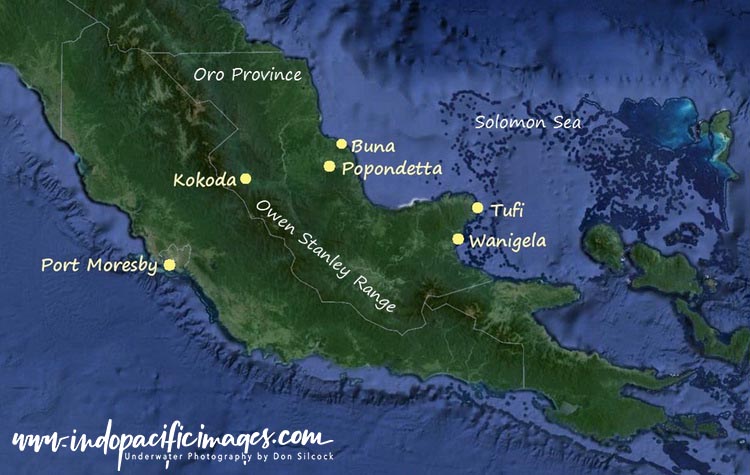
Diving the B25 Mitchell Bomber Wreck “Pistoff”
The Pistoff wreck rests quietly on the flat sandy seabed. Remarkably intact, apart from the front nose cone with its twin machine guns and the cockpit canopy, which are both missing.
Both engines are still attached to the wings/ Though their propellers bear the scars of the crash landing and are badly bent from the impact. The distinctive twin tailfins continue to stand tall, heavily encrusted with marine growth. Which adds to the wreck’s ghostly presence.
Diving the Pistoff wreck is best approached from the front. Where the sheared-off nose cone has become a refuge for a swirling school of glassfish. The absence of the cockpit canopy offers a rare and unobstructed view into the pilot and co-pilot’s station. Where the aircraft’s controls remain in place, frozen in time.
Further along the fuselage, the rugby ball-shaped radio pod now serves as a foundation for marine life. Home to two large clams, a sponge, and a small school of fish. Near the tail section, the large rear gun turret still holds its twin heavy-caliber machine guns, a silent reminder of the bomber’s final mission.

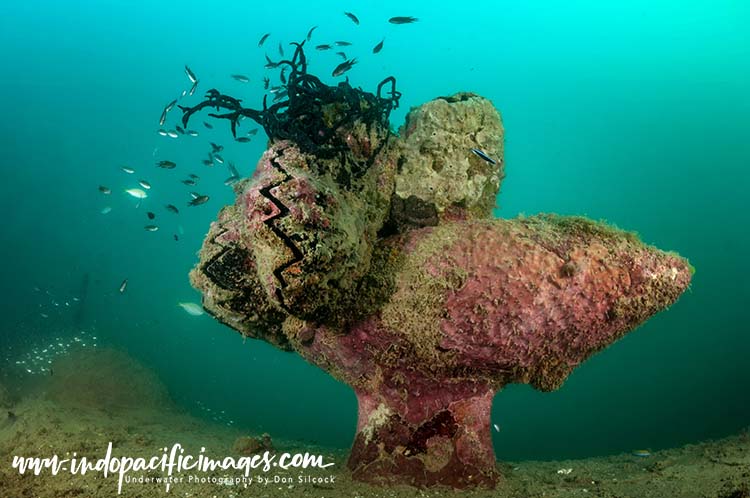
Neither of the side doors are open. So it seems Pistoff’s crew kept them closed to allow the plane to float for as long as possible after it ditched. Which meant they would have had to make their exit through the open cockpit canopy.
Because of the low visibility in the general area near the river mouth, there is very little chance of spotting the wreck from the surface. But Tufi Dive Resort have the GPS coordinates, which makes locating the plane significantly easier.
All wrecks are interesting and aircraft ones particularly so. But Pistoff and it’s ghostly environment makes for a quite unique experience. So if you get the chance to dive it, take it…

The History of the B25 Mitchell Bomber
The B25 Mitchell Bomber was designed and built by North American Aviation (which eventually became part of Boeing) at it’s Kansas City and Inglewood, California factories.
The B25 was named after General Billy Mitchell, a pioneer of U.S. military aviation.
The Mitchell Bomber was a great success and nearly 10,000 of them were built.
With versions of the plane seeing duty in every theater of WWII and most of the Allied air forces.
And many planes continuing in service for nearly 40 years.
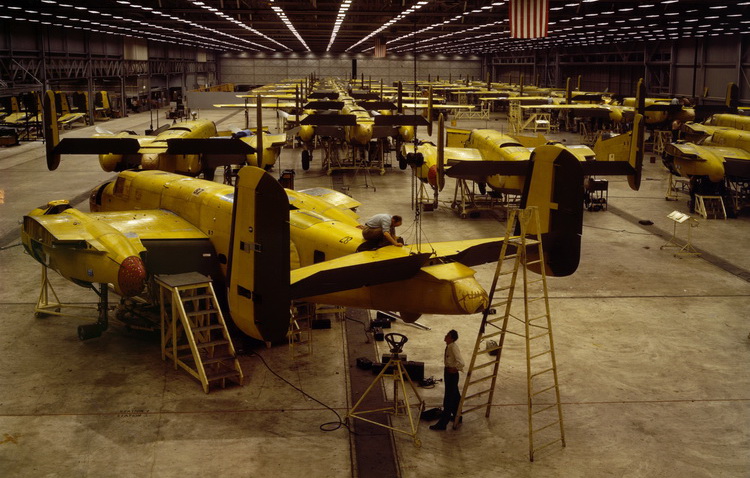
The History of the B25 Mitchell Bomber – The Doolittle Raid
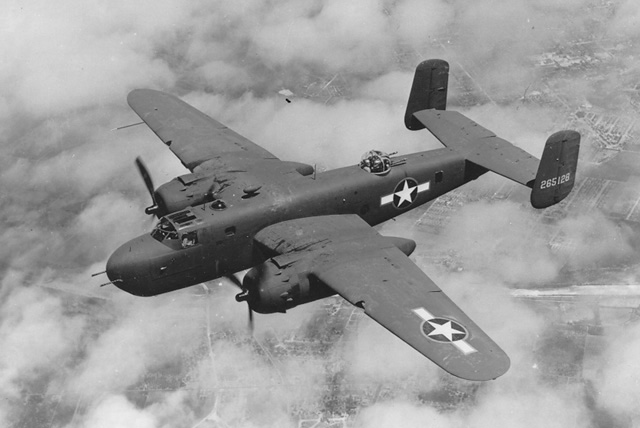
The B-25 first gained fame as the bomber used in the April 1942 Doolittle Raid on Japan.
The raid was the first American attack on the Japanese home islands and came just four months after the deastating attack on Pearl Harbor.
Led by the legendary Lieutenant Colonel Jimmy Doolittle, sixteen B-25’s were launched from the U.S. Hornet aircraft carrier and successfully bombed Tokyo and four other Japanese cities,
Although only limited damage was done, the raid was a huge morale booster for the U.S. forces and a big surprise for the Japanese.
Who had believed that their homeland was completely safe from attack. And so were forced to divert troops for the home defense for the remainder of the war.
Although the Mitchell Bomber was originally designed to bomb from medium altitudes in level flight.
It became the first bomber to attack and destroy Japanese ships using “skip bombing”. A technique developed by the United States 5th Army Air Force.
Skip bombing was a daring and highly effective low-altitude attack method pioneered in the Pacific theater.
Rather than dropping bombs from high altitudes, pilots flew just above the ocean’s surface.
Releasing their explosives so that they would skip like a stone across the water before striking enemy ships at or just below the waterline.

The technique required considerable skill, as it involved the aircraft flying at very low altitudes of around 60m above sea level. At speeds from 200–250 mph to release a “stick” of two to four bombs. Each with a four to five second time delay fuse. That release had to be made very close to the target, so that the bombs would “skip” over the surface before hitting the target.
The Mitchell Bomber proved to be a very sturdy and reliable aircraft that could withstand tremendous punishment. One well-known B-25C of the 321st Bomb Group was nicknamed “Patches” because its crew chief painted all the aircraft’s flak hole patches with high-visibility zinc chromate paint.
By the end of the war, this aircraft had completed over 300 missions, was belly-landed six times and sported over 400-patched holes. Today, many B-25s are kept in airworthy condition by air museums and collectors.
Back To: The Complete Guide to Diving Tufi
